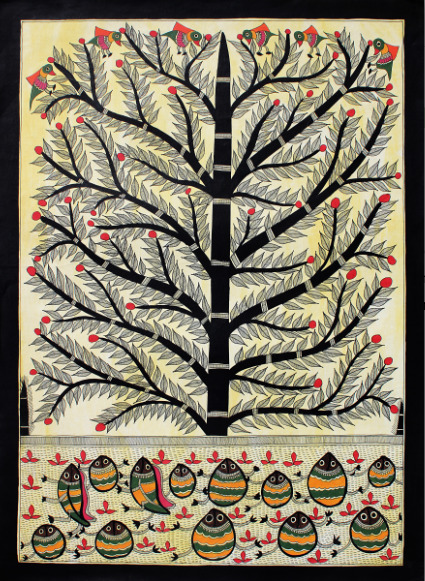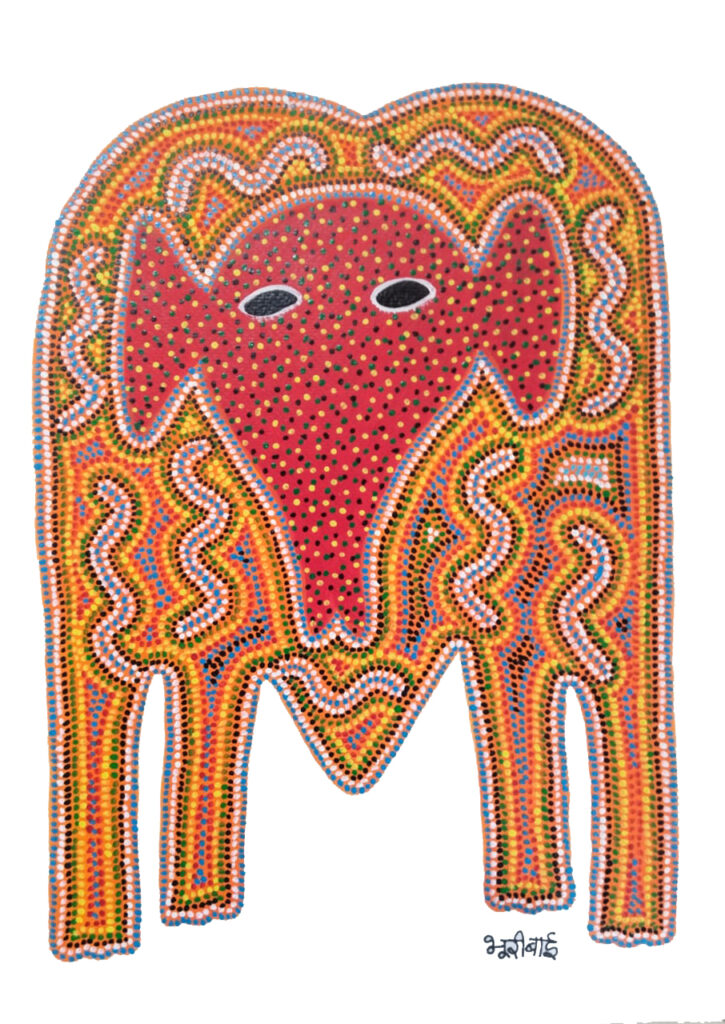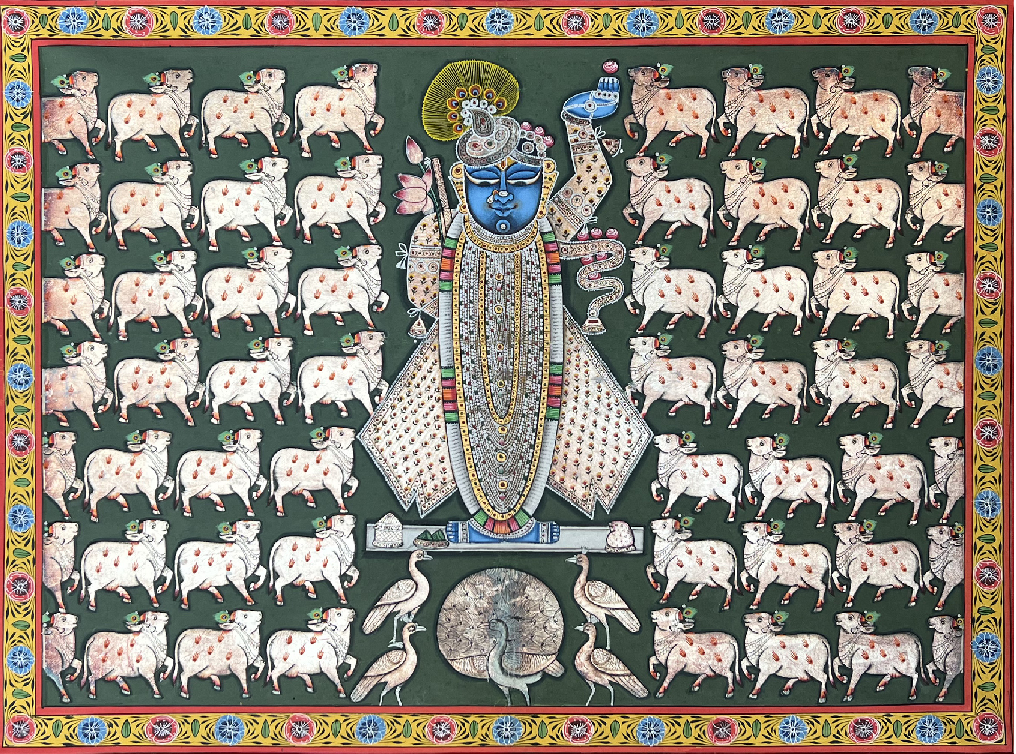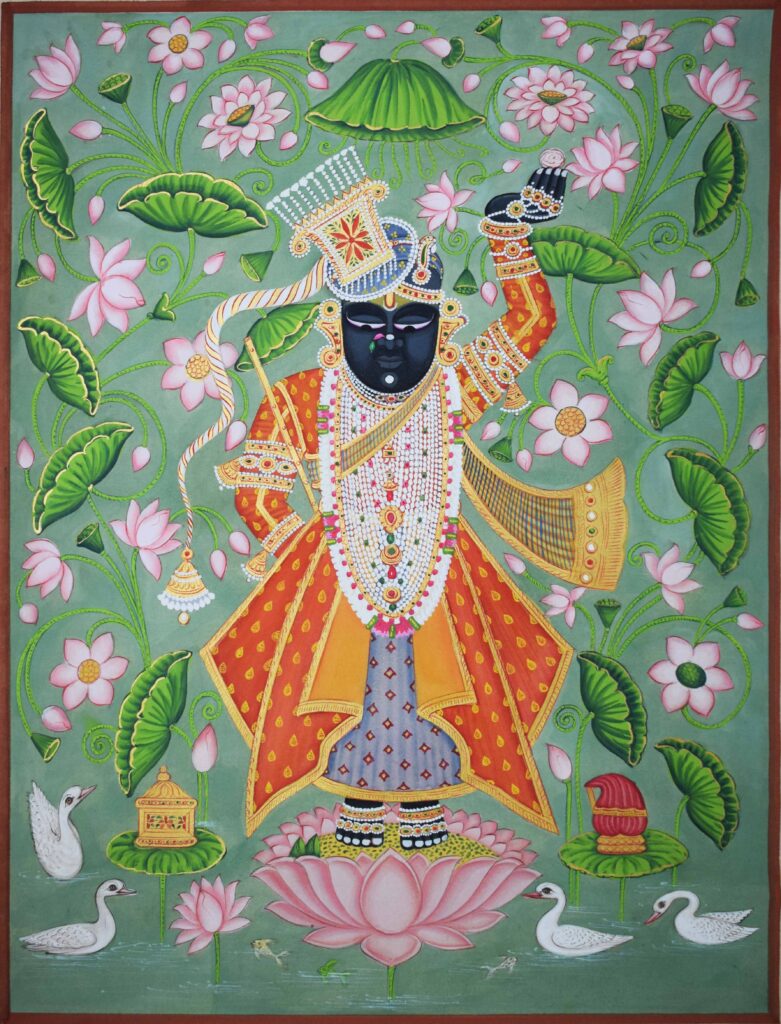From Madhubani to Pichwai folk art, India has a rich repertoire of folk art. Folk painting is usually bright in its choice of colours, and the themes are usually related to mythology or nature. These works are a wonderful way to showcase the folk art traditions of India that have survived for many centuries. Passed down through generations, they connect us to our cultural roots and remind us of the richness and diversity of India’s artistic traditions. Whether adorning the walls of rural homes or displayed in galleries around the world, these artworks continue to bridge the gap between the past and the present.
Madhubani

Madhubani Painting lines its origins back to the ancient Indian epic, Ramayana, where King Janaka commissioned artists to depict his daughter Sita’s bridal ceremony, laying the origin for this art form. Women performed a substantial function in maintaining and promoting Madhubani folk art.
The Madhubani folk art can be divided into figurative and non-figurative wall paintings. The former is more colourful and richer in symbols. Over the course of time, some women have carved a name and recognition for themselves, such as – Ganga Devi, Jagdamba Devi, Sita Devi Yamuna Devi, Baua Devi and Sarita Devi. The art of Mithila is unique, for here we can see a unique blend of comprehension, knowledge of Sanskrit and culture, vocabulary and iconography.
Madhubani painting is a folk art form that originated in the Mithila region and uses complex geometrical patterns. These paintings are rich in ritual content, and the colours are mostly derived from plants and other natural sources. The paintings are created using objects found commonly around them like twigs, matchsticks, and even fingers.
Dots and lines create magic
Bhil art is a traditional art form that originated in Madhya Pradesh. Intricate art was created on the clay walls using neem sticks and other twigs. Natural dyes would be made using materials such as turmeric, flour, vegetables, leaves, and oil. This work is by Bhuri Bai, an internationally renowned practitioner of Bhil art.
She derives her inspiration from the simple things she saw around her in her rural life. In this instance, it was an elephant standing still, seemingly lost in thought. The colourful dots and lines she employs form the body of the elephant, with these dots serving to distinguish the elephant’s face from its body.
Lord Krishna in his various forms!
Pichwai art was created to narrate the various tales of Krishna to the illiterate. This folk art form has been passed on from generation to generation and created by a community of artists from Nathdwara. This work has been created with a natural stone colour on cotton and depicts cows associated with Lord Krishna, who was a cowherd. The floral border gives the work a decorative look. The figurative style of Pichwai art is distinctive and characterized by graceful forms and intricate patterns, making it a stunning addition to any wall or collection.
Pichwai art not only serves as a visual homage to Lord Krishna but also embodies the spiritual fervour and artistic brilliance of the Nathdwara community. Its intricate designs, vibrant colours, and timeless narratives transport viewers into the realm of divine grace and devotion.
In contemporary times, our folk art not only retains its cultural significance but also serves as a vibrant expression of artistic innovation. As inheritors of these traditions, we are privileged to celebrate and preserve these invaluable treasures for generations to come.


